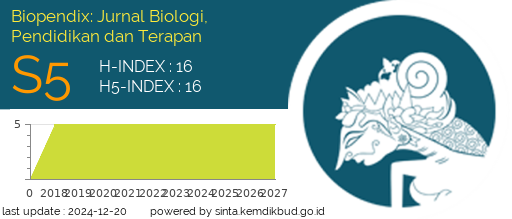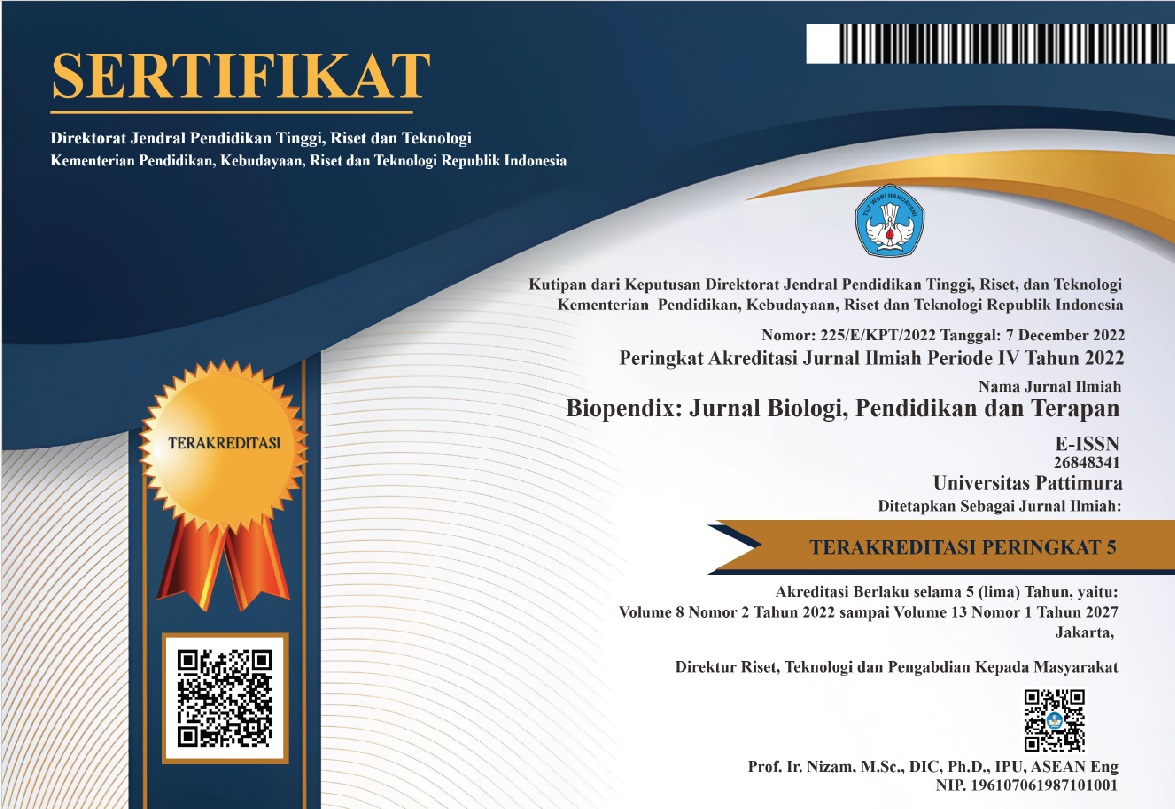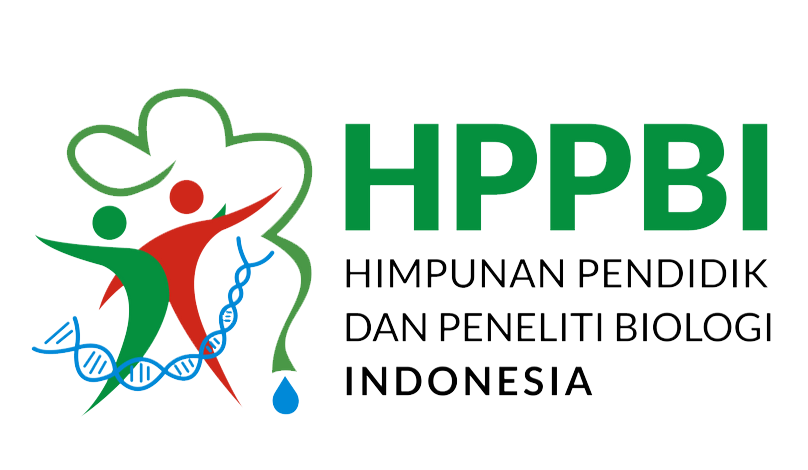STRUKTUR KOMUNITAS TUMBUHAN PAKU (PTERIDOPHYTA) DI KAWASAN HUTAN KUSU-KUSU KECAMATAN NUSANIWE DAN SOYA KECAMATAN SIRIMAU KOTA AMBON SEBAGAI SUMBANGAN ILMIAH BAGI MATA KULIAH EKOLOGI TUMBUHAN
Abstract
Background: Nail plants (Pteridophyta) are cormus plants whose bodies can be clearly distinguished between roots, stems, and leaves. However, ferns cannot produce seeds because they breed with spores. Nail plants are divided into 4 classes, namely (1) Psilophytinae (ancient nail); (2) Lycopodiinae (wire nail); (3) Equisetinae (horsetail); and (4) Filicinae (true nail). Community structure is a concept that studies species composition or composition and its abundance in a community.
Method: This research is a quantitative descriptive study to reveal information about the community structure of ferns. The study was conducted on July 18, 2018 - August 18, 2018.
Results: The ferns found in the Kusu-Kusu forest area were 10 species and the Soya region as many as 20 species. Overall the types of ferns found in the two study locations were grouped into 2 classes, namely Filicinae / Pteropsida (true nail) and Lycopodiinae (wire nails). The Filicinae / Pteropsida class has a greater number of species, both in the Kusu-Kusu forest area (8 species) and the Soya forest area (13 species). The Lycopodiinae class has a smaller number of species, both in the Kusu-Kusu forest area (2 types), and the Soya forest area (7 species).
Conclusions: 10 ferns were found in the Kusu-Kusu Sereh forest area in Nusaniwe Subdistrict, while in the Soya District of Sirimau District there were 20 species.
Downloads
References
Kelurahan Kusu-Kusu Sereh. 2018. Profil Desa/Negeri Kusu-Kusu Sereh. Lembar Wawancara.
Krebs, C.J. 1978. Ecology of Experimental Analisys of Distribution and Abudance. Second edition. New York: Haperanda Row Publisher.
Melsasail, K. 2016. Struktur Komunitas dan Pengelolaan Makroalga (Seaweed) Di Peraiaran Pantai Pulau Nusalaut Kabupaten Maluku Tengah Serta Implikasinya Bagi Pembelajaran Ekologi Tumbuhan. Tesis tidak diterbitkan. Program Pascasarjana. Program Studi Pendidikan Biologi. Universitas Pattimura Ambon.
Miftakhul, J., Wahyu, P., dan Eko S. 2015. Identifikasi Pteridophyta di Piket Nol Pronojiwo Lumajang Sebagai Sumber Belajar Biologi. Jurnal Pendidikan Biologi Indonesia. ISSN: 2442-3750. Vol, 1. No. 1. Halaman 89-98.
Musriadi, Jailani, dan Armi. 2017. Identifikasi Tumbuhan Paku (Pteridophyta) Sebagai Bahan Ajar Botani Tumbuhan Rendah di Kawasan Tahura Pocut Meurah Intan Kabupaten Aceh Besar. Jurnal Pendidikan Sains Universitas Muhammadyah Semarang. Vol. 5. No. 1. Maret 2017.
Odum, E. P. 1995. Dasar-dasar Ekologi. Jogjakarta: Gadjah Mada University Press.
Sandi, S. F., Pantiwati, Y., Hudha, A. M., dan Latifa, R. 2015. Keanekaragaman Jenis Tumbuhan Paku (Pteridophyta) Di Kawasan Air Terjun Lawean Sendang Kabupaten Tulungagung. Prosiding Seminar Nasional II Tahun 2016, Kerjasama Prodi Pendidikan Biologi dengan Pusat Studi Lingkungan dan Kependudukan (PSLK) Universitas Muhammadiyah Malang; Malang, 26 Maret 2016.
Sastrapradja, S., Afriastini, J. J., Durnaedi, D., DAN Widjaja, E. A. 2002. Jenis Paku Indonesia. Lembaga Biologi Nasional-LIPI Bogor, 129p.
Suraidi, Susanti, T., dan Amriyanto, R. 2012. Keanekaragaman Tumbuhan Paku (Pteridophyta) Di Taman Hutan Kenali Kota Jambi. Prosiding Semirata FMIPA Universitas Lampung.
Tjitrosoepomo, G. 2011. Taksnomi Tumbuhan. Yogyakarta: Gadjah Mada University Press
Yudianto, A., dan Suroso.2007. Petunjuk Praktikum Botani Cryptogamae. Bandung: Jurusan Pendidikan Biologi FPMIPA UPI.
Authors who publish with this Journal agree to the following terms:
- Author retain copyright and grant the journal right of first publication with the work simultaneously licensed under a creative commons attribution license that allow others to share the work within an acknowledgement of the work’s authorship and initial publication of this journal.
- Authors are able to enter into separate, additional contractual arrangement for the non-exclusive distribution of the journal’s published version of the work (e.g. acknowledgement of its initial publication in this journal).
- Authors are permitted and encouraged to post their work online (e.g. in institutional repositories or on their websites) prior to and during the submission process, as it can lead to productive exchanges, as well as earlier and greater citation of published works





 2
2






